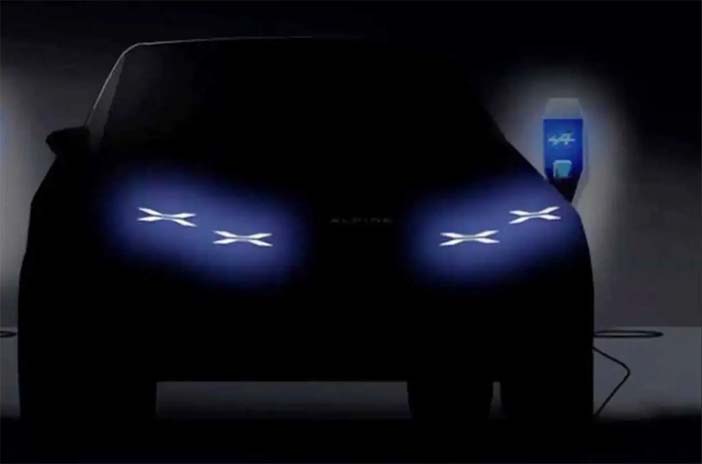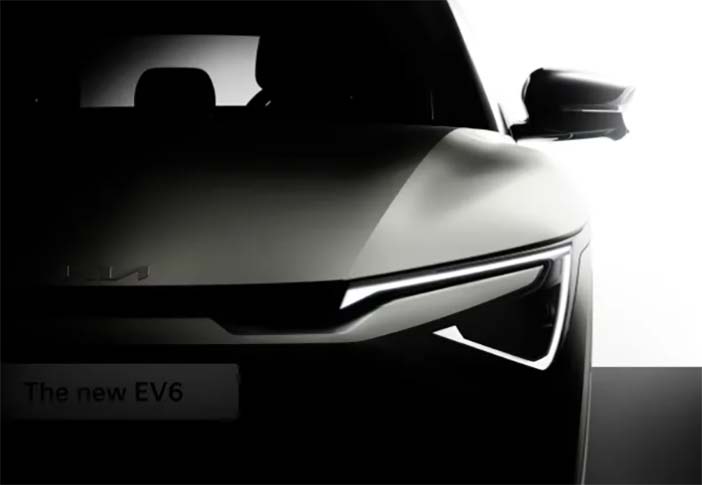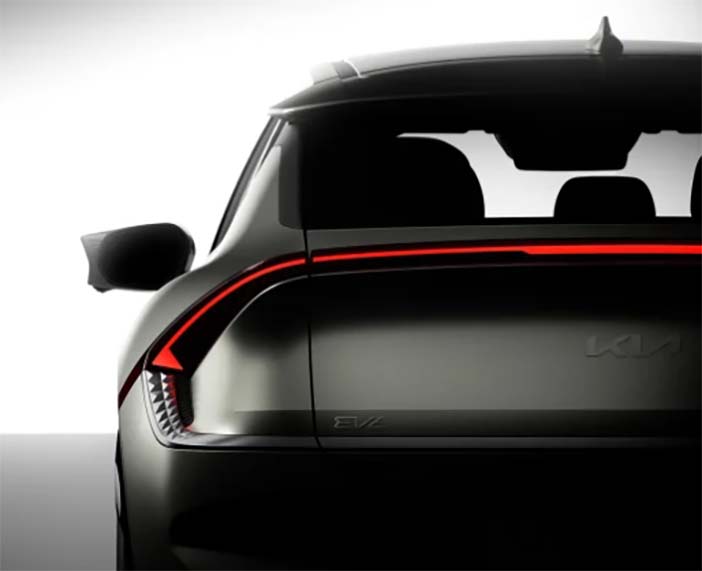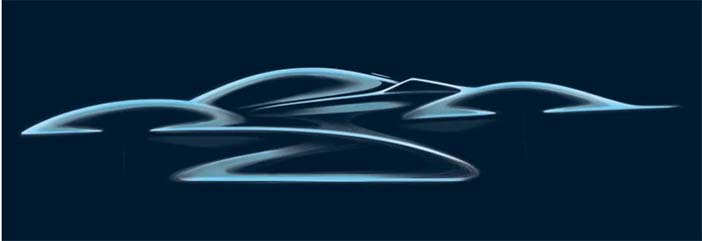+++ ALPINE has been known for its sports cars since it was founded in 1955. The only model currently available, the A110, is also a sports coupé. However, the first electric model will be a small car and is rumored to be followed by a SUV: an offshoot of the Renault Scenic. Well, the purists were also upset when Porsche launched its first SUVs on the market, which are now the brand’s most successful models. The first electric model, the A290, has already been presented as a study; the cockpit is also already partially known. The model will be officially unveiled on 13 June in the run-up to the 24-hour race in Le Mans, as has already been officially announced. The car is a derivative of the Renault 5 E-Tech, but will probably have more power at the top end. The 150 hp top drive from the R5 could be added later. The next model to follow will be an A390. This is said to be a SUV à la the Scenic. Renault boss Luca de Meo already announced at the beginning of 2021 that a type of SUV based on the CMF-EV platform (currently used for the Megane E-Tech, Scenic and the Nissan Ariya) was planned; it is now called Ampère Medium. Like the A290, however, the second electric Alpine will have a more powerful engine and a sportier chassis than the Scenic. Like the Scenic, the A390 will also be around 4.40 metres long and help to keep the plant in Dieppe (Normandy) busy. Renault did not actually promise an SUV in 2021, but a “GT X-Over”, which can probably be translated as a crossover GT. So we can probably expect something like a high-riding GT or a coupé SUV. It will be interesting to see whether the side view, at only 4.40 metres long and despite the height of at least 1.60 metres due to the battery, will look as elongated and elegant as the silhouette shown in 2021. The top version is to be an all-wheel-drive vehicle with a 3-motor drive; it is not yet clear how high the performance will be. However, it is likely that Alpine will use the 3 engines of the A390 from the Renault range. In addition, there could be the front-wheel drive with 218 hp from the bourgeois Scenic. According to the report, the car will have an 89 kWh battery; that would be 2 kWh more than the large battery from the Scenic. The Alpine A390 is not due to come onto the market until 2025, but it could be officially unveiled at the Paris Motor Show in October; whether as a design study or already in the production version remains to be seen. Alpine wants to have a complete model range by the end of this decade. This should also include the successor to the A110, which is to be called the A310 and is rumored to be launched in 2026. According to the report, this could be offered as both a combustion engine and an electric car. Alpine wants to put 7 electric cars on the road by 2030. The A290 will be the first to be launched in 2024, followed by an A390 next year and then the sports coupé, which will replace the A110, in 2026. However, 4 models would still have to follow in the years 2027 to 2030, i.e. an average of 1 model per year; an extremely tight program. +++

+++ FORD will not extend the Focus’s life cycle beyond 2025, despite the widespread drop in electric car demand that has prompted some rival manufacturers to slow the phasing out of their combustion cars. Ford announced in 2022 that it would shut down the Focus production line in Saarlouis, Germany, in mid-2025. It has so far been unsuccessful in finding a buyer for the site, but Europe boss Martin Sander said the firm doesn’t have “any plans to extend Focus production”. That’s despite Ford having adjusting its EV sales forecast in light of “adoption slowing versus our original assumptions”. Recently, the similarly sized Mercedes-Benz A-Class was given a stay of execution until 2026 because of sustained ICE demand. Meanwhile, Renault has cancelled the IPO of its electric vehicle division, Ampere, JLR said it would slow its EV transition to build more PHEVs and the Volkswagen Group throttled back on the output of several EVs as supply outpaced sales. But Sander said Ford remains committed to retiring ICE models and progressing with the switch. He said: “In the long run, we are still deeply convinced that EVs will be the future and we will see a significant increase in volume”. He added: “By the end of this year, we will have a full range of electric vehicles and we are quite flexible to adapt to market demand. For the next couple of years, we have a broad choice. Basically, our customers have the power of choice to pick what they want”. The Blue oval has suggested that smaller cars are not off the cards, however. The firm has suggested it will offer small electric cars once it has launched a family of 4 electric SUVs in Europe. +++
+++ The end could be near for FISKER . Actually, it may have already happened. In a first-quarter earnings call last week from Magna International, the company stated that Ocean production is still idled and it “assumes no further production” will take place. It’s not an official announcement from Fisker, and “assume” isn’t a definitive stand from Magna. Still, it’s pretty damming considering the current state of Fisker. Magna International is the company that builds the Ocean for Fisker. Production takes place through Magna Steyr, a subsidiary of the company at its manufacturing facility in Austria. Ocean production was idled back in early March for what was supposed to be a 6-week pause. But that timeframe has come and gone. Here’s the specific quote from Magna International CEO Swamy Kotagiri regarding Fisker from the company’s Q1 earnings call: “It is important that I provide an update on our current status for the Fisker Ocean program. Production of the vehicle is currently idled. Our current outlook issued today assumes no further production. Consistent with disclosure, we provided in our annual information form, this assumption reduces our 2024 sales by about $400 million and impacts our adjusted EBIT margin by about 25 basis points”, Later in the call, Magna International chief financial officer Pat McCann also mentioned the company assumes “no more production of the Fisker Ocean”. It means Magna International will fire 500 employees in Austria since there are no longer needed. It’s certainly no secret that Fisker is in trouble. Talks of partnering with an automaker to help the company’s cash flow situation fell apart back in March. Fisker said it didn’t have the funds to survive through the end of the year, and shortly thereafter it drastically slashed prices on 2023 modelyear Oceans. Most recently, the company was rumored to be in talks with more automakers for a possible partnership. However, the stock price has tanked and reports of nightmare Ocean ownership experiences are becoming more widespread. +++
+++ It’s confirmed: the new facelifted KIA EV6 is going to be unveiled later this month, less than 3 years after the brand’s first bespoke all-electric car arrived on our shores. Along with the announcement, Kia shared the first official images of the refreshed EV6. These give us a sneak peak at the changes made to the front end, particularly the new ultra-slim daytime running light design that’s split by a blade-like grille panel.

We also get a look at the subtly revised rear light bar. However, these won’t be the only styling tweaks. The EV6 will be getting a major redesign to incorporate a new look inspired by the EV9. We’ve already seen the influence of the head-turning 7-seater flagship in the recently overhauled Sorento. Inside, the facelifted EV6 is sure to get Kia’s latest infotainment system, and we may also see it inherit the ‘triple panorama display’ layout from the EV9 as well. This includes a 12.3-inch digital driver’s display and a 12.3-inch central touchscreen, like the current EV6, but sandwiched in between them is a smaller 5.3-inch touchscreen for the climate controls. The EV6 should receive a bigger battery too, as its sister car, the Hyundai Ioniq 5, was updated earlier this year and saw its powerpack grow from 77.4 kWh to 84 kWh. Hyundai also reinforced the body of the Ioniq 5 further to improve “stability and agility”, and added extra sound insulation to improve refinement, changes which may be applied to the EV6, too. Kia recently declared it will have a range of 6 bespoke EVs in Europe by 2026. Joining the EV6 and EV9 later this year is the new compact EV3, followed by the EV4 and EV5 in 2025, and finally the EV2 in 2026. +++

+++ NISSAN remains committed to its long-term electrification objectives but will work to offer a ‘flexible’ mix of powertrain technologies in response to wavering global demand for electric cars. That’s according to CEO Makoto Uchida, who gave an overview of Nissan’s global performance and evolving electrification progress. He was speaking just over a month after Nissan revealed its new Arc business strategy, under which it will launch 30 new cars over the next 2 years, 16 of them electrified in some way, in order to achieve a 40% global sales mix of electrified cars by 2026. This plan was devised with a view to adapting to an uncertain market environment, Uchida said, and will allow Nissan to maintain a footing in markets that are slower to move to EVs. “We have always been telling you that electrification makes sense depending on the customer’s choice”, he said. “We know that the current pace of EV adoption has slowed down, but our ultimate goal will be the same. “How we keep our roadmap flexible enough to the current situation and moving forward is going to be the key. We have to have a difference of our electrification strategy in each respective market. How flexibly we can adjust is going to be key. We are still keeping our goals, but the pace of the roadmap might have to be flexibly adjusted. It’s a matter of whether we can provide the appropriate product to the customer demand, and of course customer acceptance and taste will need to be carefully monitored”, Nissan recently hinted at plans to replace the Juke and Qashqai with electric equivalents in the coming years, and before that it will launch a third-generation Leaf and a Micra replacement based on Alliance partner Renault’s new 5 E-Tech. In China, where Uchida acknowledged that Nissan needs to work to fend off new rivals and bolster its brand perception locally, the company will launch 5 new EV models, which it previewed recently with concepts at the Beijing motor show. Crucially, he said, these will be developed (in collaboration with joint venture partner Dongfeng) “in China, for China”, meaning they can be engineered and designed from the ground up to cater specifically to Chinese market demands and tastes. “We used to have a kind of global company, where we used to design everything in Japan and adapt it for the US, Europe and China, but this scheme will no longer exist”, Uchida said. He didn’t write off the possibility of these China-developed cars being exported to other global markets, acknowledging that Nissan has “excess capacity” at the moment in its Chinese factories, but emphasized that they will be developed chiefly with China in mind. Another key tenet of the Arc plan is for Nissan to reduce its EV production costs by some 30% in order to better compete with fast-moving Chinese rivals. This will be achieved, Uchida said, “”not only with supply chain co-operation but also in-house technology, battery sourcing – and we need to design the cars on less diversified platforms in order to ensure our costs are competitive”. Uchida also said Nissan remains committed to putting solid-state battery technology in a production car in 2028, citing the emerging battery technology as a potential “game-changer for the future in terms of the acceptability of BEVs”. “We still have a lot of confidence in making this happen for the market”, he said, reaffirming a commitment to open a pilot plant this year and ramp up to mass production in the next 4 years. +++
+++ The legendary F1 designer and engineer Adrian Newey will be leaving Red Bull in early 2025, but until then, he’s focusing all his efforts on delivering the company’s track-only, V10-powered hypercar, the RED BULL RB17 . Set to be unveiled this year with a whopping price tag of €7.5 million in the Netherlands, the RB17 has been described as “the purest execution of an F1-inspired hypercar” and is the brainchild of Newey; Red Bull Racing’s chief technical officer. He joined the team, which now has 6 Formula One constructors’ titles to its name, in 2006. Red Bull said in a statement on 1 May: “The engineering supremo will step back from Formula One design duties to focus on final development and delivery of Red Bull’s first hypercar, the hugely anticipated RB17. He will remain involved in and committed to this exciting project until its completion”. The RB17 was first announced back in July 2022 and will coincidentally rival another one of Newey’s creations, the Aston Martin Valkyrie, plus other track-only cars like the €7 million Ferrari 499P Modificata and €5 million Bugatti Bolide. In an interview during Red Bull’s ‘Talking Bull’ podcast, Newey said the RB17 will feature a V10 engine, reflecting the V10-powered Formula One cars of the late 1990s. The V10 engine will rev to an astonishing 15.000 rpm and is set to produce well over 1.100 hp, trumping the already hardcore 1.000 hp Aston Martin Valkyrie AMR Pro. The petrol engine will be mated to a 200 hp electric motor to help increase power, but also provide drive for the reverse gear. Unlike the Valkyrie, the RB17 is a track-only model, freeing up Newey to focus purely on the aerodynamics rather than having to adhere to road car regulations. We have no doubt the RB17 will deliver scintillating performance with its monstrous engine, and having been designed around a carbon-composite tub to ensure light weight. Keeping the car stuck to the tarmac will be “the most advanced ground effect package available in a series production car”, according to the company. A blown diffuser (a piece of technology that helped Sebastian Vettel dominate during the early 2010s), plus active suspension will help generate lots of grip and the aerodynamics will provide the RB17’s own weight in downforce at 200 kph. Production is set to start in 2025 at Red Bull’s campus in Milton Keynes, turning one of the UK’s newest cities into a car-making city. Only 50 RB17s will be made and only in left-hand drive. Buyers will have access to a package that will be tailored to their use of the car, with full support from the factory including servicing and maintenance. The 50 owners will also benefit from an exclusive relationship with the Red Bull Racing team, getting them access to the vehicle development program, use of the team’s simulators, involvement in the RB17 development program, plus on-track training and experiences. The name RB17 comes from the lineage of Red Bull Racing’s F1 cars. Red Bull raced the RB16 in 2020, but the following year’s car was not deemed different enough to take the RB17 name, instead being called RB16B. Its next F1 car was the RB18 in 2022 and then the record-breaking RB19 in 2023, with its name also reflecting the number of years Red Bull racing had existed up to that point. However, in spite of Horner going on the record stating that the a 17 will never exist, that name is now set to be used for the new hypercar. As for what the RB17 will look like, Red Bull has only released an official sketch showing the swooping aerodynamic lines of the car and a cockpit for two people covered by a racing canopy. However, the sketches hint at the real thing looking similar to a series of virtual racers designed by Red Bull Racing for the Gran Turismo racing game series. The Red Bull X2010, X2014 and X2019 trio were designed by Adrian Newey, featuring similar aerodynamic bodywork to the RB17 sketches, including a canopy over the driver. Speaking at the launch of the RB17, Christian Horner, who is the CEO of both Red Bull Racing and Red Bull Advanced Technologies, said: “The RB17 marks an important milestone in the evolution of Red Bull Advanced Technologies, now fully capable of creating and manufacturing a series production car at our Red Bull Technology Campus. The RB17 marks the first time that a car wearing the Red Bull brand has been available to collectors”. Adrian Newey said: “The RB17 distils everything we know about creating championship-winning Formula One cars into a package that delivers extreme levels of performance in a two-seat track car. Driven by our passion for performance at every level, the RB17 pushes design and technical boundaries far beyond what has been previously available to enthusiasts and collectors”. +++

+++ In the UNITED KINGDOM , growth in the sales of hybrid, plug-in-hybrid and electric cars in April had the new car market continue its upward trend, despite a slump in uptake from private buyers. According to the Society of Motor Manufacturers and Traders (SMMT), a total of 134.274 new cars were delivered during the month; a 1.0% increase compared with April 2023. This marked the sector’s 21st consecutive month of growth following the Covid pandemic. The latest sales figures have confirmed industry warnings that private buyers remain to be convinced of the merits of battery-powered EVs, with just 15.6 percent of the total number of EVs sold in April going to retail customers. That’s a worrying 21.9 percent drop in the proportion of EVs going to private buyers compared to April last year, when 22.1 percent of all EVs were sold privately. In contrast, fleet sales continue to push the EV sector forward, as big government incentives on benefit-in-kind tax for company cars continue to drive demand. As a result of those booming corporate sales, electric car registrations rose by 10.7 percent, lifting April market share to 16.9 percent, compared to 15.4 percent in April last year. On the overal market, large fleet registrations accounted for 81.207 units (an increase of 18.45 percent) while sales to private buyers declined 17.7 per cent to 50.458 units. In the light of its latest figures, the SMMT’s April sales statement calls for “urgent action to re-enthuse private buyers into switching” to EVs. It points out that while drivers have the widest-ever choice of EV models, and increasingly compelling offers from manufacturers, “the lack of government incentives for private motorists remain a barrier that cannot be overcome by industry alone”. The SMMT has repeated calls for a temporary 50 percent tax on EVs and is urging changes to the ‘expensive car’ supplement to Vehicle Excise Duty (road tax), which will hit many EV buyers with much bigger bills from April next year. Also on on the SMMT’s lobbying agenda is more action on charging infrastructure. It says there is currently just 1 standard charger available for every 35 plug-in cars on the road, which it says is “a negligible improvement” on the ratio in 2022 when there was 1 charger for every 36 plug-in cars. “The new car market continues to grow even in the quieter months, driven primarily by fleet demand”, says SMMT chief exec Mike Hawes. “This is particularly true of the electric vehicle sector, where the absence of government incentives for private buyers is having a marked effect. Although attractive deals on EVs are in place, manufacturers cannot fund the mass market transition single-handedly. Temporarily cutting VAT, treating EVs as fiscally mainstream not luxury vehicles, and taking steps to instill consumer confidence in the chargepoint network will drive the market growth on which Britain’s net zero ambition depends”. These were the best-selling cars in April: Ford Puma – 4.339 units, Volkswagen Polo – 3.413, Audi A3 – 3,010, Nissan Qashqai – 2.495, Volkswagen Golf – 2.361, Kia Sportage – 2.192, Volkswagen T-Roc – 2.162, MG HS – 2,073,
Volvo XC40 – 2,069 and Volkswagen Tiguan – 2.004 +++

